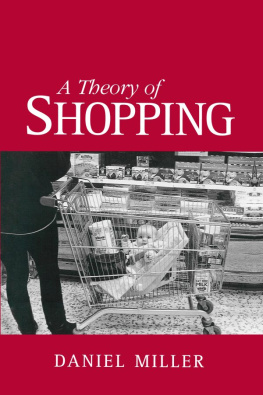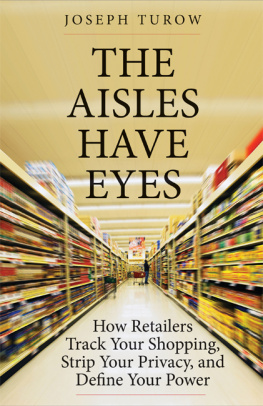What Becomes an Abandoned
Superstore Most?
V isualize a long, wide, flat stretch of pavement. At its center is a triangular wedge of dirt, encased in concrete. This is a tiny Eden, perhaps seven feet at its widest point, but it is nonetheless a carefully landscaped and tended garden. Picture blue spruce and dusty millers, yellow daylilies and creeping juniper. See the hemlock too. We are in a deserted parking lot. Perhaps three cars huddle here, near Troy-Schenectady Road, only a mile or so from the larger and conspicuously full lot shared by Wal*Mart and Home Depot, even nearer the New York Route 87 exit ramp.
But this apparently abandoned site is not a lackluster entrant in a quest for price-sensitive shoppers. What was once a Grand Union grocery store and strip mall near the Albany suburb of Latham, New York, has been reincarnated as Grace Fellowship Church. Its parking lot is empty for a reason. Today is Tuesday. Sunday, agitated drivers will jockey here for pride of place, too.
The low-slung building is fronted with the glass add-on structures more usually affixed to garden center stores. The entrance doors no longer open automatically, the gum-ball machines, grocery carts, coin-operated mechanical horse rides and neighborly bulletin boards are banished. No sign reminds us that ground chuck once sold here for $2.19 a pound, but we sense it. The air-conditioning offers that cherished jolt against the overwhelming humidity of a June day in a landlocked county. We are in a familiar setting, almost.
Once inside, it begins to get stranger quickly. The gray-blue carpeted entrance and, for now, desolate welcome area obliterate any vestige of a row of footsore cashiers under its italicized and chipper Information Center sign and plum-accented counter.
The silence disturbs. We miss the noises, the movements, the rat-ta-tat-tat of human commerce, of scanning products along a conveyor belt, of calling for price checks and check approvals, of making change and small talk. The mundane needs and momentary lusts of harried mothers juggling toddlers and coupons have retreated far from these barren aisles. Where there was once an Express Lane, there is now a tiny counseling office with two wing chairs and an artificial fireplace. But still, we can nearly hear the echoes of the old ADD-afflicted prayer, Please, Lord, get me out of here.
We stand in the once-upon-a-time home to iceberg lettuce, snap peas, Chilean sea bass, ground chuck, frozen chicken nuggets, Kraft Macaroni and Cheese, Tide, Oreo, organic rutabaga, Pepsi, Heinz Tomato Ketchup and other nuts and bolts of modern life.
Twenty Delatour Road is a Grand Union of a different stripe. Forsaken by the grocery store chain attempting to crawl out from under bankruptcy, this Big Box now retails in spiritual wares. The photo array of pastor and elders succeeds an earlier showcase for the store manager and employee of the week. The sanctuarys mauve-upholstered, stackable chairs offer seating to 1,025; it has been architecturally primed to grow to 1,400 at any moment. Its Christian rock bandready stage is complete with sophisticated audio calibrated from a production booth at the rear of the room. The 50-inch closed circuit TV screens stand mute and as ready to spring to life as the deep plush of the theatrical red velvet curtain is ready to part, to reveal, to enrapture.
We are in a familiar if not easily decipherable setting. Anchored by the knowledge that it is okay to choose among a set of equivalent brands, we are drawn calmly into the canon of mass-produced religion. It is all here for everyoneand it is just for you, your preferences, your predilections, your products, your way. In this case, regardless of whether you grew up Episcopalian, Lutheran, Methodist, or any other of 400-some flavors of Christianity, you are welcomed to a nondenominational brand of worship that opens its arms generally to alland particularly to you. The serene environment is at once as universal and as specific as a grocery list.
The fruits and nuts were over there, says Gerry Pettograsso, with the comfort of a canned witticism, as we look around the sanctuary and he points merrily to the far wall. Hes the crew-cut, stocky, polo-shirted and chino-clad 50-something facilities manager and a church member.
The strip mall adjacent to the Grand Union has been annexed by Grace Fellowship as well. Now the reclaimed storefronts hold the nursery with its Disneyesque murals depicting Noah and the ark and Daniel in the lions den in the bright primary colors designed to evoke the supersized glee more typically gleaned from Saturday-morning cartoons. (There is also a fresco depicting a hitherto unknown Bible story involving space travel and an astronaut.) Farther down the one-time shopping arcade passageway, Alcoholics Anonymous and other small-group meeting areas are revealed, along with adult classrooms and a work-in-progress library.
Weve been here three years, Pettograsso says, walking along the passageway. A lot of the demolition was done by parishioners and most of the Sunday-school dcor is volunteer work. Like the King Jesus Room, he says, opening one of a dozen doors.
The nameplate on the door ratifies his statement: This is indeed the King Jesus Room, decorated in a dark-gray palette and featuring a medieval theme, enhanced by a suit of armor and mock-up of a castle surrounding a small stage with microphones and sound equipment. It too is vacant; its use indecipherable. He moves along, toward the old warehouse: The loading dock area is now the choir room.
Soon enough Pettograsso arrives at the site of another conversion: What was once the Home Style Buffet is now the home of the Grace Fellowship Youth Ministry, complete with DVD players, video games, walk-in refrigerators and live feed from the main sanctuary for services that overflow. Scores of television sets are placed strategically throughout the room, firmly attached, high on pillars. In the snack area, round black tables, each encircled by three black chairs, mimic the fluorescent-lit, potential intimacy of any fast-food franchise on any metropolitan thoroughfare, just before opening time.
Tomorrow night, this eerie quiet will be displaced by the din of teenagers convening with their parents blessings to hang out. Theyll trod the well-worn brown-and-black-patterned carpeting that rumples at the corners where it meets a wall. Theyll slouch on the cast-off sofas scattered about the place. Theyll give the old snow-cone machine another whirl, while considering the hereafter amid the here-and-now of high school gravitas.
The artist Julia Christensen, who has made it her project to study abandoned Big Box stores, explained it to me. Its about the cars. These stores were built near access roads; thats the core idea. Before the advent of the automobile, everything was built within walking distance: church, stores, meeting places. The organizing principle was proximity.
These Big Box stores exert the power they do and can be reconfigured for many, many purposes not because of the store, but because of the infrastructure that supports it: the roads, the parking, the accessibility within the sprawl of modern life, when driving 60 miles is no big deal.
Thus the megastore has become the megachurch. You dont need to be clairvoyant to intuit that, in a culture in which people speak of shopping for a church, this makes a weird kind of sense. The sanctuarys ten-foot ceiling and fire-retardant, sound-enhancing acoustical panels do not force the worshippers gaze upward. Natural light is nonexistent; no need for stained glass here. The weekday cool and calm is dizzying.



![Mobile Library - Multiple Income Streams (3)--Make Money Doing Mystery Shopping: Get Paid To Shop and Earn More Money! [ Multiple Income Streams Series--Vol 3 ]](/uploads/posts/book/418994/thumbs/mobile-library-multiple-income-streams-3-make.jpg)








